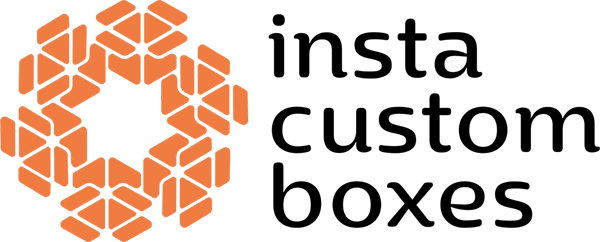What are the Different Printing Techniques Used in Custom Packaging?
Printing techniques for Packaging Boxes are the best way to manage and specify colors for printing. In custom packaging, RGB, CMYK, and PMS are the main color modes or color systems used for printing.
Each printing technique has its own specifications for managing colors for printing. Likewise, various color modes are used for different types of packaging materials, depending on the specifications of both materials and color modes.
Insta Custom Boxes has a brief explanation of each color system.
RGB (Red, Green, Blue):
RGB, short for red, green, and blue, is a key shade model in digital technology. These three number-one colorings are mixed up in numerous intensities to provide a widespread form of coloration on video display units and virtual displays. In RGB, 255 degrees of depth are available for each color, allowing for particular shades.
This version is the basis for all color presentations, from PC video display devices to television video display units, and it performs an essential function in growing the vibrant and practical visuals we enjoy in our digital world.
CMYK (Cyan, Magenta, Yellow, and Key/black):
CMYK, representing Cyan, Magenta, Yellow, and Key (Black), is the pass-to coloration model for printing. In CMYK, colorations are created by subtracting the probabilities of these four ink hues from a white background. This model is identical for the whole industry, from home printers to massive-scale presses, ensuring correct and regular published colorings.
The "K" stands for black due to the fact that the use of herbal black ink is more green than mixing the opportunity colorings. CMYK is the cornerstone of the printing enterprise, ensuring remarkable and authentic-to-lifestyle color duplicates in diverse revealed materials.
PMS (Pantone Matching System):
The Pantone Matching System (PMS) is a standardized shade device used in design and printing. It simplifies coloration conversation with the aid of a method of assigning unique codes to over 1,800 colors. PMS shades are created by blending specific ink formulations, ensuring consistency in shade reproduction across diverse materials.
Designers and printers depend on PMS for specific color matching, in particular when brands want to remain steady. PMS is a useful tool for accomplishing accuracy and maintaining logo integrity within the global context of format and printing.
Which packaging material is best for printing?
Each material has its own advantages and disadvantages, primarily based on its distinctive capabilities. The preference of packaging material for printing depends on your precise dreams and the intent to use the printed packaging boxes.
Kraft Boxes:
Kraft Packaging Boxes have an herbal and earthy appearance and texture, which is chosen for green packaging designs. CMYK and PMS color models are suitable for this material. Still, they're not only considered quality packaging material because of their tough texture; they also do not apprehend colorations precisely due to their rusty look.
Corrugated Packaging:
Corrugated Boxes are also called corrugated fiberboard. These packaging boxes are usually used for transport functions. CMYK and PMS coloration models are appropriate for printing directly on the floor. Corrugated material calls for specialized sorts of devices for printing.
Rigid Material:
This material is made from compacted cardboard or chipboard sheets. Rigid material is used for luxury packaging, offering a pinnacle finish and a strong feel. These Rigid Boxes can work with specific finishes and printing designs. CMYK and PMS modes are each appropriate for it.
Cardboard:
The most versatile and generally used packaging material is cardboard, which offers a smooth and consistent surface for printing and completing. It may additionally be protected with the desired laminations, relying on the essential finishing. Both printing structures are used for printing on this packaging material.
With Insta Custom Boxes, many elements determine the proper printing modes, like required design complexity, your budget, and specific color requirements. Discuss your alternatives and desires to obtain particular and ideal consequences.
Conclusion:
In Custom Packaging, we can come across a mixture of more than one coloring mode and strategy on a single package deal. Which coloration mode to apply depends on the custom packaging format requirements and the talents of the printing machine.
In most cases, RGB is used for virtual shows at the same time as PMS is used for spot colors. CMYK is the same old printing technique used for whole-color printing.
The "fine" material for printing depends on your branding approach, price range, product kind, and design alternatives. Due to its easy and regular floor, cardboard is the most appropriate material among all packaging materials, as it allows any printing and completing to be accomplished.

